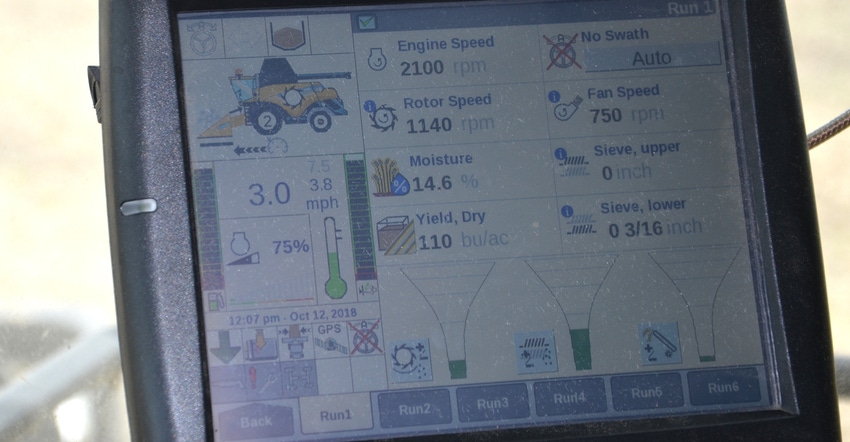November 2, 2018

By Tony Bailey
Long-term, sustainable, resilient cropping systems should be everyone’s goal. Take time to review this past season’s crop production for potential yield-influencing factors during tight economic times.
When we think of maximum yield potentials, what comes to mind? The world record yield of 527 bushels per acre for corn was set in 2017 in Virginia. The world record yield for soybeans of 171 bushels per acre was set in 2016 in Georgia. And the world record yield for wheat of 249 bushels per acre was set in 2015 in the United Kingdom. Usually these record yields aren’t whole-farm averages, and often, inputs include even the kitchen sink. They do, however, show what’s possible.
Plant breeders tell us that the genetic potential of each crop is much higher than our current yearly averages. What was your best farm, field or plot average? Maybe 100-plus-bushel soybeans and 300- to 500-plus-bushel corn? Not all soils are created equal, and this impacts yield potential.
Assess your crops
Now is a great time to assess how much of its genetic yield potential your crop used this year, and what might have held it up from its maximum. The view from the combine, along with yield monitors, makes this much easier.
Take advantage of yield monitors to record weedy or drowned-out spots. Yield maps also should show these locations, but it’s possible to forget why some areas yielded less.
Goals to achieve a long-term, sustainable, resilient cropping system should include reducing soil loss. Are you at least below T, the tolerable limit? Soil map units with a 2 mean “eroded”; a 3 means “severely eroded.” Are movement and deposition of sediment obvious? Are there ephemeral or classic gullies? Is the snow dirty at field edges? Dirty snow signifies wind erosion.
Sustainable yields also need soil organic matter. Are soil-test organic matter levels decreasing, maintaining or increasing? Improved nutrient use efficiency is key, too. What is the ratio of nutrients applied vs. used by the crop? Water use efficiency is crucial. Do raindrops enter the soil where they land or run off? Can you apply an inch or more of water and not experience runoff?
Yield-limiting factors
Here’s a list of yield-influencing factors: weather — too hot or cold, too dry or wet; hybrid and variety selection; planting dates; planting populations and soil fertility.
More possible factors include pH, nitrogen, phosphorus, potassium and other macro- and micronutrients. Do you follow the 4 R’s and pursue the right nutrient rate, timing, placement and form?
Other yield-influencing factors include weed management and populations; integrated pest management of insects, disease, nematodes and more; drowned-out spots; surface crusting; and soil compaction.
It can sometimes be challenging to pinpoint a single reason why a location isn’t living up to its capabilities. Often there are multiple factors involved. Identifying the most common factors is the path to developing your plan.
Make sure to assess which factors are most problematic on a field-scale or per management zone or grids. Put together a plan to address them. Maintaining and building long-term, sustainable, resilient cropping systems that decrease erosion, increase soil organic matter levels, and improve nutrient and water use efficiency should be your goals.
Bailey is the state conservation agronomist with the Natural Resources Conservation Service. He writes on behalf of the Indiana Conservation Partnership.
You May Also Like




